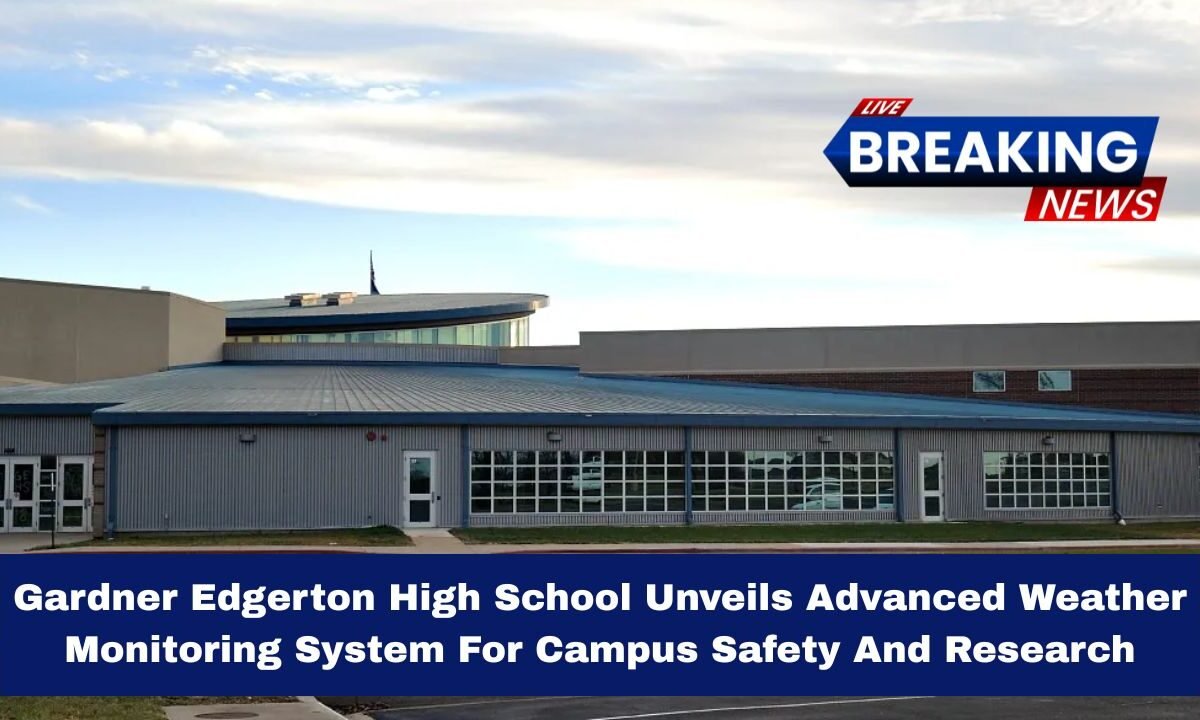Gardner Edgerton High School has taken a bold step toward enhancing campus safety by unveiling a sophisticated weather monitoring system.
Designed to detect lightning, evaluate heat stress, and deliver real-time updates to coaches, families, and students, this system empowers the entire school community to respond to severe weather smarter, faster, and more confidently. What the System Does
This integrated weather platform brings together several critical capabilities:
- Lightning Detection & Alerts
The system monitors for lightning strikes within a 10-mile radius of campus. Upon detection, it triggers audible sirens and a strobe light, signaling all to seek shelter immediately.
After a standard safety window of 30 minutes without new strikes, it issues an automatic all-clear notification. - Heat Stress Monitoring with WBGT
To ensure safer practices during hot weather, the system tracks Wet Bulb Globe Temperature (WBGT)—a scientifically accredited index combining temperature, humidity, wind, and solar radiation.
Coaches can adjust workouts, breaks, and rest intervals to protect students from heat-induced risks. - Live Mobile Access & Countdown Timer
Coaches, families, and students gain mobile access to local conditions via a widget or app. The interface displays real-time metrics and a countdown timer tied to the lightning all-clear protocol, ensuring clarity and transparency around safe return times. - Strategic Placement & Coverage
Mounted at a prime location atop the school’s Advanced Technical Center, the unit is situated between the main building and athletic fields—optimally placed to monitor conditions impacting both classroom and outdoor spaces.
Key Features & Specifications
| Feature | Description |
|---|---|
| Lightning Radius | Detects strikes within 10 miles of campus |
| Alert Mechanisms | Dual sirens + strobe light |
| All-Clear Protocol | 30-minute countdown before resumption |
| Heat Monitoring | WBGT index for heat stress evaluation |
| User Access | Mobile widget/app for staff, students & families |
| Location | Mounted atop the Advanced Technical Center |
| Primary Goals | Faster sheltering, safer practices, transparent warnings |
| Future Plans | Evaluate expansion to middle & elementary schools |
| Relation to District Plans | Aligned with ongoing facility & safety improvements |
How It Elevates Safety & Learning
- Sharper Decision-Making in Emergencies
Lightning detection coupled with automated alerts reduces reliance on human judgment under stress—ensuring everyone hears or sees the warning, even during noisy events. - Proactive Heat Safety Management
Real-time WBGT tracking helps adjust workout timing, shorten sessions, and prescribe more frequent hydration/rest breaks, reducing the risk of heat illnesses. - Community Confidence Through Transparency
With open mobile access and clear countdowns, families know exactly when conditions are safe, increasing trust and reducing anxiety over postponements or delays. - District-Wide Safety Vision
Though installed at the high school, district leadership is evaluating expansion to other schools—promising unified safety standards across Gardner Edgerton High School educational network.
Community & Educational Impact
As the only high school in the district, the new system provides coverage to a broad range of athletic events, practices, and shared facilities.
It supports both varsity and club sports, marching band rehearsals, outdoor classes, and community events. In effect, the investment elevates campus risk management, bridges trust with stakeholders, and may influence surrounding districts to adopt similar systems.
Gardner Edgerton High School’s new weather monitoring system represents a leap forward in campus safety. By combining lightning alerts, heat index analysis, and transparent mobile access, the school provides faster, clearer, and smarter protection to its students, staff, and families.
The system not only enhances day-to-day safety, but signals a broader commitment to proactive, data-driven care—setting a new standard for K–12 campuses who wish to balance education, athletics, and well-being in unpredictable weather.



